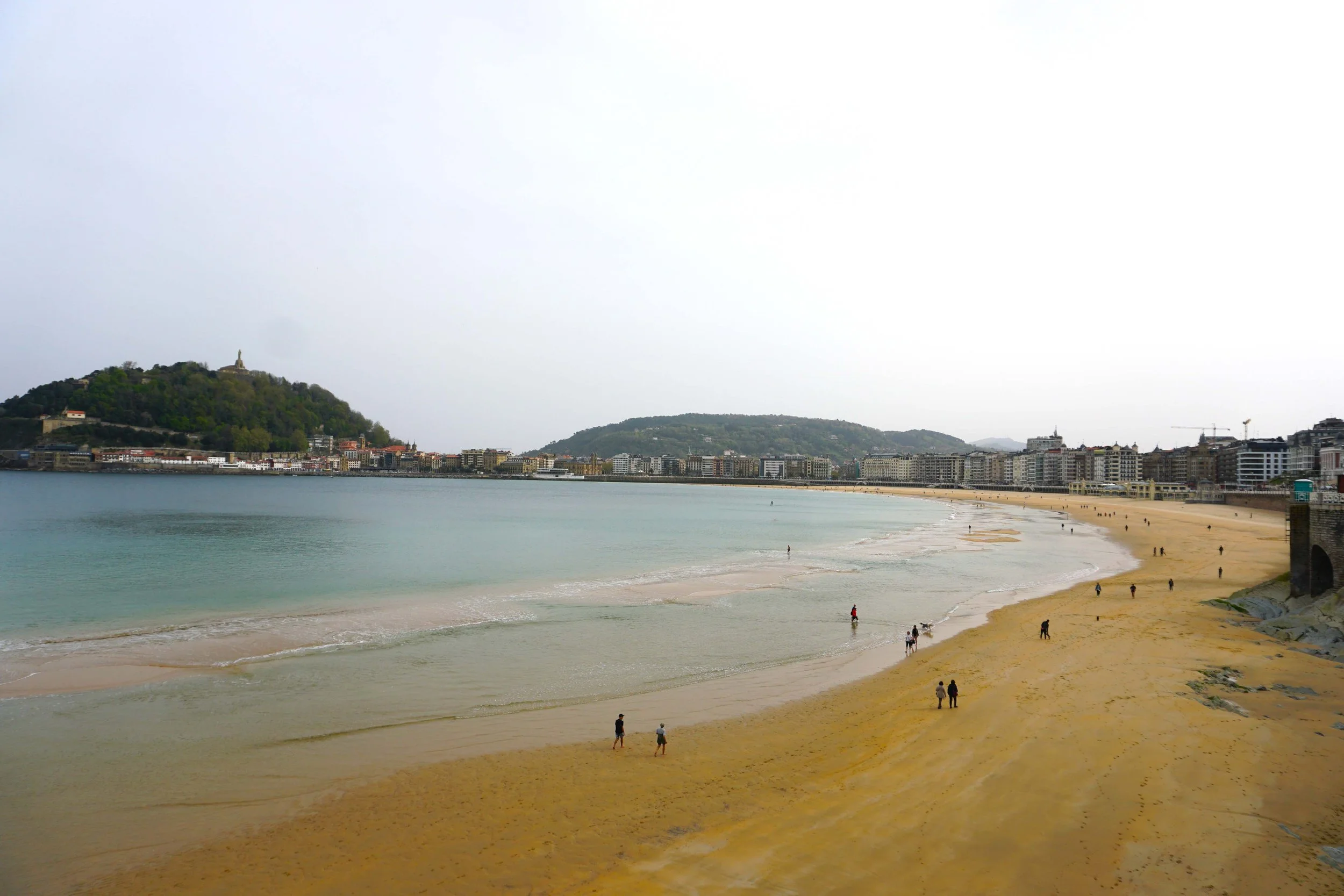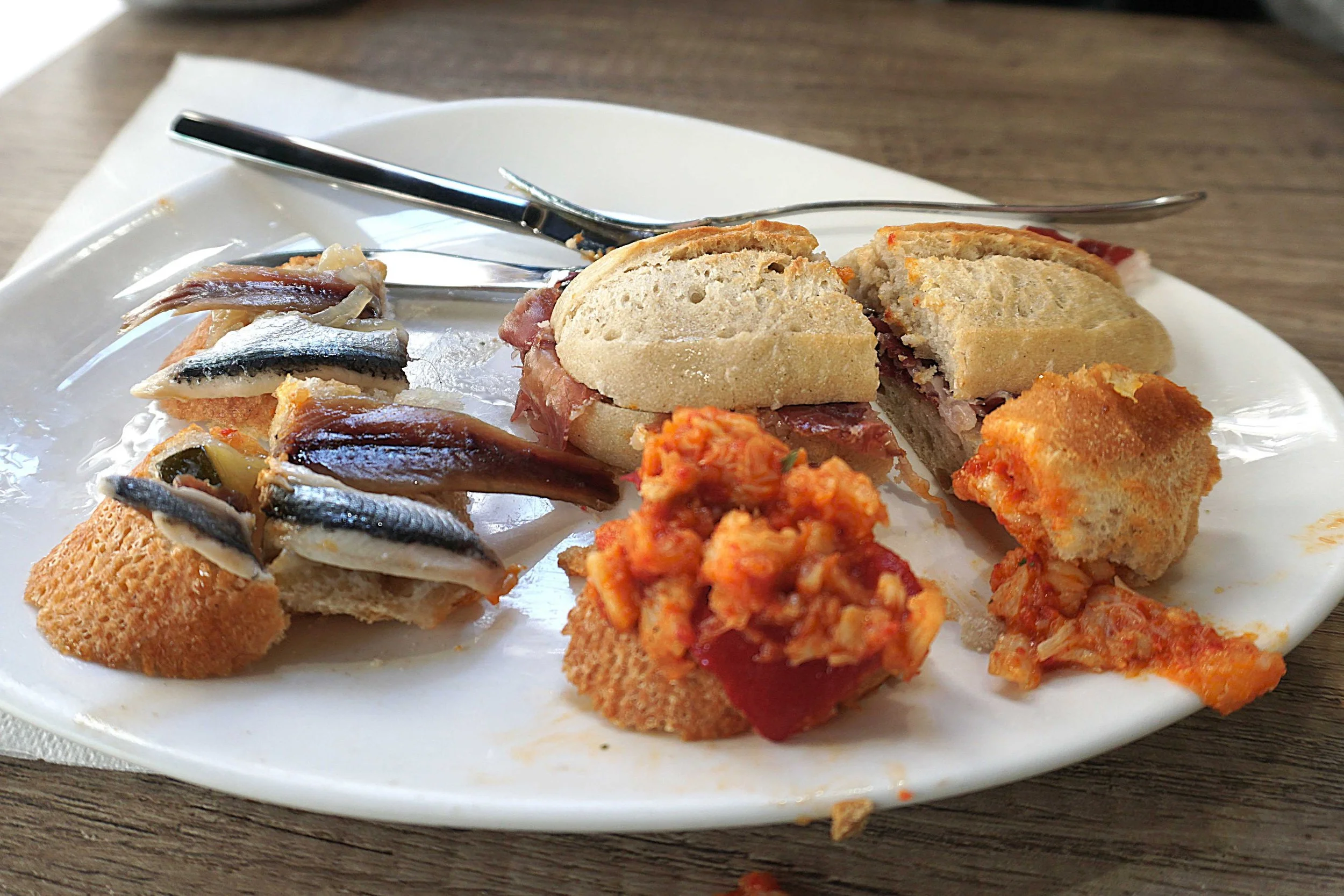In the Land of Pintxos
It’s been a while since we’ve been to Spain so here we go, top to bottom starting in Basque. The Basque country straddles the North of Spain and the South of France. The Spanish area is about 100 square miles.
It is kind of like a separate country as they have their own language which has no resemblance to either French or Spanish. Everywhere you go there are signs in two languages, one of which is Basque, called Euskera, which has no direct link to any other known language.
One of the biggest attractions – at least for foodies and gluttons – is the city of Donostia-San Sebastian (which of course has two names) in the Spanish region. It has more Michelin restaurants per capita than anywhere in the world. (There are 19 Michelin restaurants within a ten-minute drive and three of those have three stars).
But there is also a remarkable tapas scene in the old town. This area, about a dozen blocks of cobbled streets, was established in the 12th century and is mostly comprised of small bars that feature tapas or as they are locally known, pintxos. It’s simple really, you walk into a bar and the counter is lined with stacks of small plates containing snacks like a slice of baguette topped with a fresh anchovy and sardine on a bed of onion cooked down to a paste. Gone in two bites. Or a skewer of their special Basque beef, served practically raw (don’t ask for medium). Or a small glob of crab salad topped with a sweet shrimp sitting precariously on top of a slice of baguette.
Years ago, pintxos were offered for free in bars as long as you were drinking.
You would order a glass of local red or white wine or a small glass of beer called a caña or a local specialty, what they call cider.
These days, pintxos are not free anymore but they are cheap, generally around €2-3, and the drinks are in the same range. So, our plan has been to eat a regular multi-course lunch and then dinner would simply be a few pintxos.
The best way to experience the pintxos scene is via a pub crawl. Peak into a bar - the more crowded the better the pintxos will be - and check out the small plates stacked on the counter. Point to a couple and order a drink. Pay, eat, down the booze, and move on to the next bar. In the most popular bars, you have to fight your way to the counter to order.
We also booked a very nice 1-star called Rekondo, located up in the hills in a beautiful old sandstone building with a giant elm tree that overwhelmed the terrace and was held up with a maze of heavy cables.
A wood-burning grille turned out an amazing slab of roasted pig and some delicate fish that went well with a bottle of local Basque country white wine.
Often, though, the clientele can be more interesting than the food.
We were ridiculously early at 1:30 for lunch and around 3 a group of ten French men and women – obviously regulars, judging by the hugs, kisses, and greetings – sat at a long table, strangely with the females at one end and the gentlemen at the other.
The men were in their late 60s/early 70s, probably retired, and dressed identically in baggy corduroy pants, nicely pressed shirts, and muted patterned sweaters. They had the same hair - a kind of out-of-control gray wooliness reaching out in all directions. Neither a comb nor a mirror is a priority for them. The women were thankfully age-appropriate and of course more elegantly dressed.
It’s remarkable how much French people can eat, at least males. I think younger French females pretend to eat which is why they stay slim until they hit late middle age at which point, they join their male counterparts in the fun. They were served at least ten courses and each one resulted in silence from the table except for the frantic scraping of utensils. Wine came out in buckets. And hardly a word was exchanged until the coffee was served.
OK, enough about food. There are more charms to be had in San Sebastian. It’s located on a broad beach in a charming bay with a tradition of fishing that dates back to forever ago. There’s also some great surfing around the area and bike paths everywhere so you can zip around the mostly flat town in no time.
About 15 years ago I came to San Sebastian for the first time for a two-week Spanish immersion course in a small school at the edge of town.
I was given the choice of taking the “adult” course which was apparently for seniors who had been told that the best way to stave off Alzheimer’s was to learn a language or do the crosswords.
No way I was going to spend two weeks learning such important idioms as how to say “knee replacement,” “I think I’m having a heart attack,” or reminiscing about old network sitcoms like “Yo queiro Lucina,” (I love Lucy). So, I signed up for the regular course.
Little did I know that it was going to be made up of American kids who convinced their parents to bankroll their trip to Spain to learn the language. And little did their parents know that they were bankrolling a surfing safari. Because on the first sunny and breezy day, I was the only one in the class. The rest of them were hanging ten in the bay.


